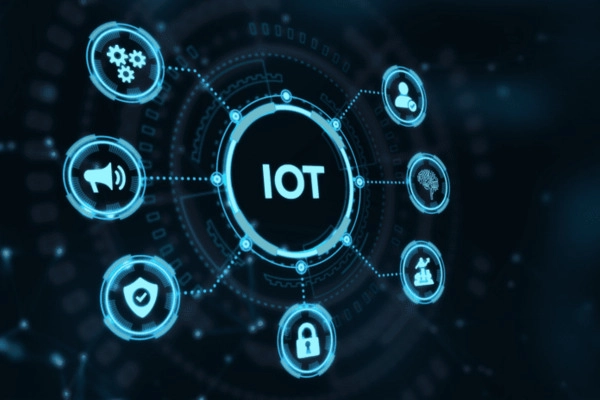Understanding the cost of IoT service deployment is an essential step that helps businesses prepare the right budget and optimize their investment efficiency. From hardware, software, and security to network infrastructure, every component directly influences the total cost and overall system performance. This article will help you grasp the key cost factors, calculation methods, and strategies to optimize IoT deployment for your business.
What is the cost of IoT service deployment?
The cost of IoT service deployment refers to the investment required for a business to build, operate, and maintain a complete IoT system. IoT (Internet of Things) includes sensors, controllers, gateways, network infrastructure, software platforms, and data analytics technologies. Depending on the project scale and industry, the total cost may range from a few thousand dollars to several hundred thousand dollars or more.

Implementing IoT is not simply about purchasing devices and connecting them to the Internet. Businesses must consider factors such as scalability, security, data integration, and long-term operational costs. In the following section, we will explore the key elements that directly influence the overall cost of IoT deployment.
Factors that affect the cost of IoT service deployment
There are many factors that can impact the total cost of IoT implementation. Understanding each of these elements helps businesses create accurate investment plans and avoid unexpected expenses. Below are the most important factors that determine the overall cost of IoT service deployment.
System security level
Security plays a critical role in any IoT system. When devices are connected to the Internet, the risks of intrusion, cyberattacks, or data breaches increase significantly. As a result, security-related expenses often account for a substantial portion of the total deployment cost.

Some key components that contribute to security costs include:
- End-to-end data encryption
- Security certificates for devices
- Intrusion detection and prevention systems
- Regular firmware updates
- User management and access control
The higher the security requirements, the greater the deployment cost. In sensitive industries such as finance, healthcare, energy, or manufacturing, security expenses can account for 20–40% of the total IoT budget.
Interoperability between IoT devices
For an IoT system to operate seamlessly, devices must be able to communicate with each other even if they come from different manufacturers. This requires the system to support various communication protocols such as MQTT, CoAP, Modbus, Zigbee, BLE, Wi-Fi, 4G, and 5G.
If a business uses many incompatible devices, developing custom drivers or data converters will significantly increase costs. This challenge becomes even more pronounced in older factories, where new IoT devices must be integrated with outdated industrial machinery, leading to higher integration expenses.
System scalability and upgradeability
A small IoT system may be inexpensive at the start, but costs increase as the number of devices grows and data processing requirements expand. Designing a system without scalability means that businesses may need to upgrade the entire system when adding more devices.
Expansion costs may include:
- Adding additional sensors and gateways
- Upgrading network bandwidth
- Expanding server storage and processing capacity
- Increasing IoT platform licenses
- Adding advanced data analytics features
Therefore, businesses should recognize from the beginning that IoT is a long-term project. A well-designed scalable system helps reduce additional costs in the future.
UX/UI design and user experience
An IoT application not only needs to function effectively but also must be user-friendly. UX/UI costs depend on:

- Interface customization level
- Complexity of the data model
- Number of dashboards
- Cross-platform design (Web/Android/iOS)
The more intuitive the interface and the more real-time charts and reports it integrates, the higher the development cost. In enterprise IoT projects, UX/UI can account for approximately 10–25% of the total deployment cost.
Number and type of IoT devices used
Hardware is one of the most variable cost factors in IoT deployment. Device costs depend on:
- Type of sensor (humidity, temperature, motion, current, etc.)
- Durability and industrial standards
- Power source (battery or direct power)
- Sensor accuracy
- Data transmission range or performance in harsh environments
For example:
- Standard temperature sensors may cost only a few tens of dollars.
- Industrial-grade or explosion-proof sensors can cost several hundred to several thousand dollars.
The more devices a business uses, the higher the overall cost of IoT service deployment will be.
Integration of operating systems, APIs, and cloud platforms
An IoT system requires the integration of multiple components:
- Embedded operating systems on devices (RTOS, Linux, etc.)
- APIs connecting to enterprise software
- Data transmission to cloud platforms
- Analytics and storage modules
API and cloud costs may include:
- Monthly server or cloud service fees
- IoT platform licenses (if using third-party solutions)
- Data integration with ERP, CRM, SCADA, etc.
These costs can extend over several years depending on the business’s operational model.
Features and objectives of IoT applications
The more features an IoT application has, the higher the deployment cost. High-cost features may include:
- Real-time monitoring with high update frequency
- Emergency alerts
- Remote device control
- AI-based data analytics
- Process automation
- Large-scale data storage (Big Data)
Therefore, businesses should prioritize essential features in the initial phase and plan for incremental upgrades.
Calculating the total cost of IoT service deployment for businesses
To determine the total cost of IoT service deployment, businesses need to consider five main cost categories:

- Hardware costs: Includes sensors, gateways, connectivity modules, and network devices.
- Software costs: Development of web/mobile applications, dashboards, and data analytics algorithms.
- Connectivity costs: Wi-Fi, 4G/5G, LoRaWAN, NB-IoT, or industrial network cables.
- System integration costs: APIs, connection to data platforms, and synchronization with internal software.
Operation and maintenance costs:
- Server or cloud service rental
- Regular device maintenance
- Software updates
- Personnel for system operation
The total IoT cost can be calculated as:
Total IoT Cost = Hardware + Software + Integration + Connectivity + Long-term Operation
Businesses can request detailed quotes for each category to better control their budget.
Solutions to optimize IoT deployment costs
Optimizing costs is crucial for businesses to implement IoT efficiently without wasting resources. Common strategies include:
- Prioritizing devices that meet actual needs and avoiding unnecessarily expensive ones
- Using open-source platforms like ThingsBoard to reduce software costs
- Leveraging existing infrastructure (internal servers, Wi-Fi networks)
- Conducting pilot projects (POC) before large-scale deployment
- Implementing a phased deployment approach instead of building everything at once
- Standardizing communication protocols to reduce future integration costs
- Increasing process automation to lower operational personnel costs
Applying these strategies can help businesses save 20–50% of total IoT deployment costs.
Frequently Asked Questions About IoT Costs
To give businesses a clearer understanding of IoT expenses, here are some of the most common questions.
Is IoT low-cost?
IoT is not always inexpensive. The cost depends on:
- Project scale
- Types of devices used
- Security requirements
- Application features
However, thanks to technological advancements, IoT device costs have decreased significantly compared to the past, making it more accessible for businesses.
How does IoT help businesses save operational costs?
IoT helps reduce operational expenses through:
- Lower labor costs via automation
- Real-time monitoring to minimize incidents and response time
- Early alerts to prevent major equipment failures
- Energy optimization, especially in factories or smart buildings
- Data analysis to improve productivity and reduce waste
As a result, businesses can save 15–50% of operating costs depending on the industry.
The cost of IoT service deployment may vary depending on the scale and objectives of each business. However, with careful planning and cost optimization, IoT can deliver long-term value far exceeding the initial investment. By selecting appropriate devices, optimizing infrastructure, and implementing projects in phases, businesses can significantly reduce costs while achieving high efficiency. IoT is a strategic step toward enhancing productivity and sustainable digital transformation.
